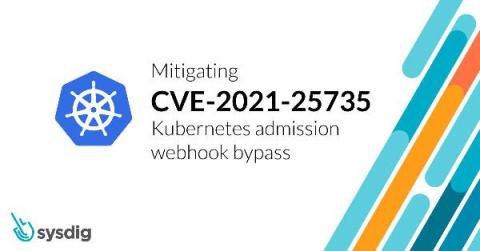Operations | Monitoring | ITSM | DevOps | Cloud
Vulnerability
Automate remediation of threats detected by Datadog Security Monitoring
When it comes to security threats, a few minutes additional response time can make the difference between a minor nuisance and a major problem. Datadog Security Monitoring enables you to easily triage and alert on threats as they occur. In this post, we’ll look at how you can use Datadog’s webhooks integration to automate responses to common threats Datadog might detect across your environments.
CVE-2021-31440: Kubernetes container escape using eBPF
In a recent post by ZDI, researchers found an out-of-bounds access flaw (CVE-2021-31440) in the Linux kernel’s (5.11.15) implementation of the eBPF code verifier: an incorrect register bounds calculation occurs while checking unsigned 32-bit instructions in an eBPF program. The flaw can be leveraged to escalate privileges and execute arbitrary code in the context of the kernel.
Protecting Windows protected processes
This quick blog is the first in a two-part series discussing a userland Windows exploit initially disclosed by James Forshaw and Alex Ionescu. The exploit enables attackers to perform highly privileged actions that typically require a kernel driver.
Detecting and Mitigating CVE-2021-25737: EndpointSlice validation enables host network hijack
The CVE-2021-25737 low-level vulnerability has been found in Kubernetes kube-apiserver where an authorized user could redirect pod traffic to private networks on a Node. The kube-apiserver affected are: By exploiting the vulnerability, adversaries could be able to redirect pod traffic even though Kubernetes already prevents creation of Endpoint IPs in the localhost or link-local range.
Exploiting and detecting CVE-2021-25735: Kubernetes validating admission webhook bypass
The CVE-2021-25735 medium-level vulnerability has been found in Kubernetes kube-apiserver that could bypass a Validating Admission Webhook and allow unauthorised node updates. The kube-apiserver affected are: You are only affected by this vulnerability if both of the following conditions are valid: By exploiting the vulnerability, adversaries could bypass the Validating Admission Webhook checks and allow update actions on Kubernetes nodes.
Streamlining Vulnerability Management with Splunk Phantom
Vulnerabilities are weaknesses in the security infrastructure that bad actors can exploit to gain unauthorized access to a private network. It is nearly impossible for security analysts to patch 100% of the vulnerabilities identified on any given day, but a vulnerability management plan can ensure that the highest risk vulnerabilities (those that are most likely to cause a data breach), will be addressed immediately.
Mitigating CVE-2021-20291: DoS affecting CRI-O and Podman
The CVE-2021-20291 medium-level vulnerability has been found in containers/storage Go library, leading to Denial of Service (DoS) when vulnerable container engines pull an injected image from a registry. The container engines affected are: Any containerized infrastructure that relies on these vulnerable container engines are affected as well, including Kubernetes and OpenShift.
Kubei walk-through: A Kubernetes Runtime Vulnerabilities Scanner - Milind Chawre
Why You Need to Closely Monitor Your Exchange Servers
Monitoring your on-prem and hybrid cloud infrastructure has always been important. With an ever-growing rise in cyber attacks, zero-day exploits, and insider threats, keeping track of your infrastructure has a renewed level of significance. Microsoft Exchange is one of the most prominent enterprise systems in use today, with both cloud and on-prem iterations.











